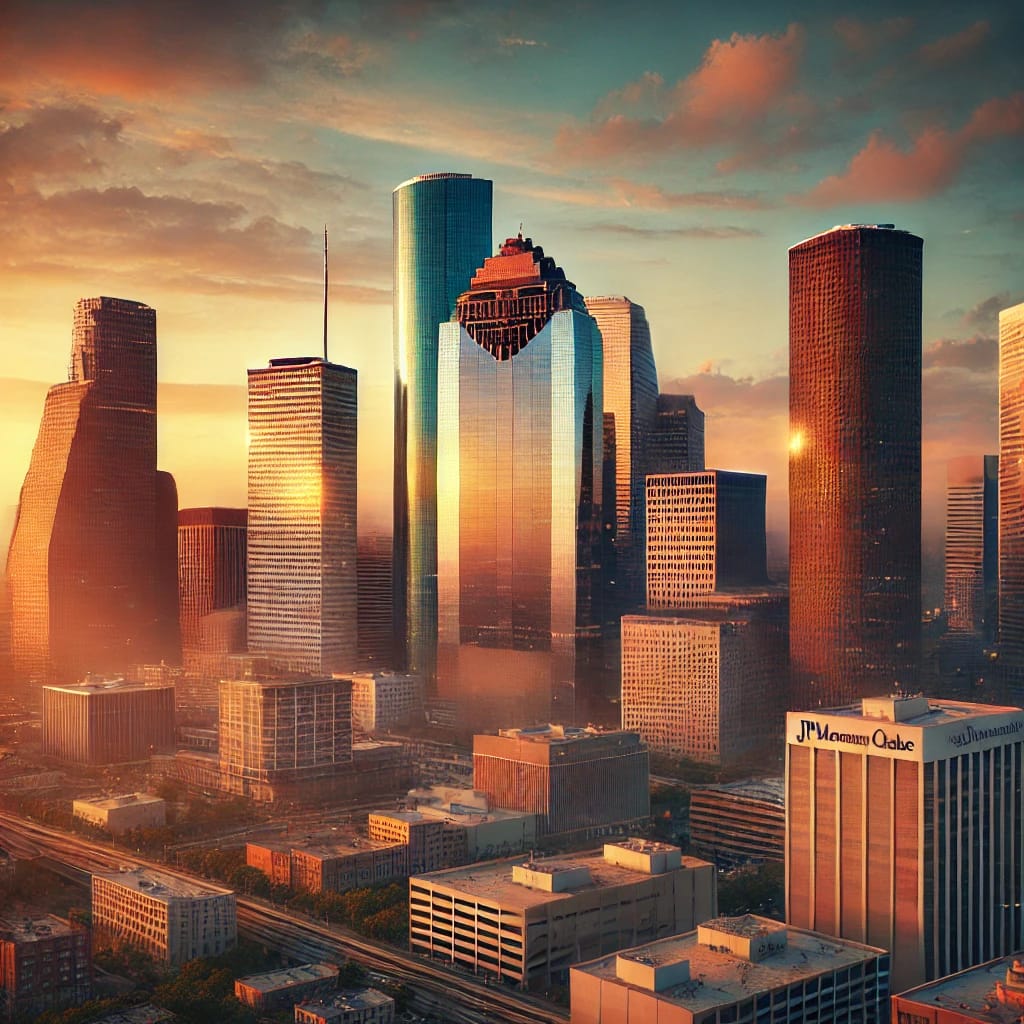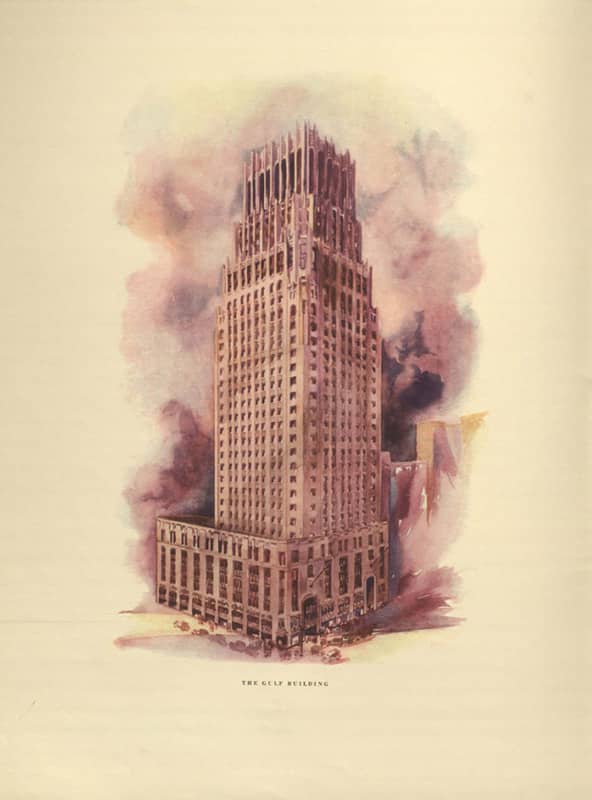
Early Ambitions: The Foundations of Houston’s Skyline
Houston’s journey to building some of the tallest skyscrapers in the U.S. began in the early 20th century, driven by economic growth fueled by oil, trade, and finance. One of the first significant high-rises was the Gulf Building (now the JPMorgan Chase Building), completed in 1929. At the time, it was the tallest building in Houston, standing at 430 feet. Its sleek Art Deco style symbolized Houston’s rising status as a commercial hub.

The city’s ambitions grew along with its economy. By the 1970s, Houston experienced an architectural boom, with developers vying to reshape the skyline. These early skyscrapers represented both innovation and economic power, laying the foundation for a city known for constant reinvention and upward growth.
The Rise of the Giants: Houston’s Tallest Towers
JPMorgan Chase Tower: The Tallest in Texas
Completed in 1982, the JPMorgan Chase Tower stands at 1,002 feet with 75 floors, making it the tallest building in Texas. Designed by renowned architect I.M. Pei, the tower was originally known as the Texas Commerce Tower. Its sleek, modern design symbolizes Houston’s growth into a global energy and financial powerhouse.

What sets the JPMorgan Chase Tower apart is not just its height but also its innovative use of space and light. The tower’s design features a five-sided structure, giving it a unique silhouette in the skyline. Inside, a massive atrium floods the lower floors with natural light, setting a new standard for office buildings in the city.
Williams Tower: The Icon of the Galleria Area
The Williams Tower, completed in 1983, is a standout for several reasons. At 901 feet, it is the tallest building in the U.S. located outside of a central business district. Its reflective glass facade gives it a sleek, modern look that has made it an architectural icon in the Galleria area.

Designed by Philip Johnson and John Burgee, Williams Tower features a 64-foot rotating beacon at its top, a nod to the lighthouse tradition. This beacon is visible for miles, reinforcing the building’s presence as both a functional space and a work of art.
Architectural Diversity: Skyscrapers with Unique Styles
Houston’s skyline is a mix of styles, reflecting different architectural movements over the decades. Pennzoil Place, completed in 1976, is one of the city’s most distinctive structures, with two trapezoidal towers that appear to merge when viewed from certain angles. Its Postmodern design was a departure from the standard rectangular office buildings of the time, signaling Houston’s willingness to embrace creative forms.

Another example of innovation is the Bank of America Center, completed in 1983. Its Gothic-inspired design, with pointed arches and intricate detailing, contrasts with the sleek glass facades found on neighboring towers. This architectural diversity makes Houston’s skyline visually striking and reflects the city’s dynamic personality.

The Impact of Houston’s Tallest Buildings
The construction of these towering skyscrapers had a profound impact on Houston’s economy and culture. They attracted global businesses to the city, cementing Houston’s reputation as a hub for energy, finance, and commerce. These buildings also symbolize the city’s resilience, standing tall through economic booms and downturns.
The presence of these skyscrapers has transformed Houston’s identity, creating a skyline that locals and visitors recognize as a symbol of ambition and progress. Skyscrapers like the JPMorgan Chase Tower and Williams Tower have become landmarks, inspiring architects and developers to continue pushing the boundaries of urban design.
Houston’s Skyline Today and Tomorrow
Houston’s skyline is continually evolving, with new developments adding to its impressive roster of tall buildings. Recent projects focus on sustainability and mixed-use spaces, incorporating green technologies and urban living. Buildings like the Texas Tower, completed in 2021, reflect the city’s commitment to innovation. This modern skyscraper prioritizes energy efficiency and offers flexible office spaces designed for the future of work.

Looking ahead, Houston’s skyline will likely continue to grow, blending modern sustainability practices with architectural beauty. These new developments will further enhance the city’s reputation as a leader in urban design and energy efficiency, ensuring that its tallest buildings remain symbols of both past achievements and future potential.
Key Tallest Buildings in Houston
- JPMorgan Chase Tower: 1,002 feet – Tallest in Texas, completed in 1982
- Williams Tower: 901 feet – Tallest outside a central business district
- Bank of America Center: 780 feet – Gothic-inspired design
- Pennzoil Place: 523 feet – Iconic trapezoidal towers
- Texas Tower: 735 feet – Modern, energy-efficient skyscraper